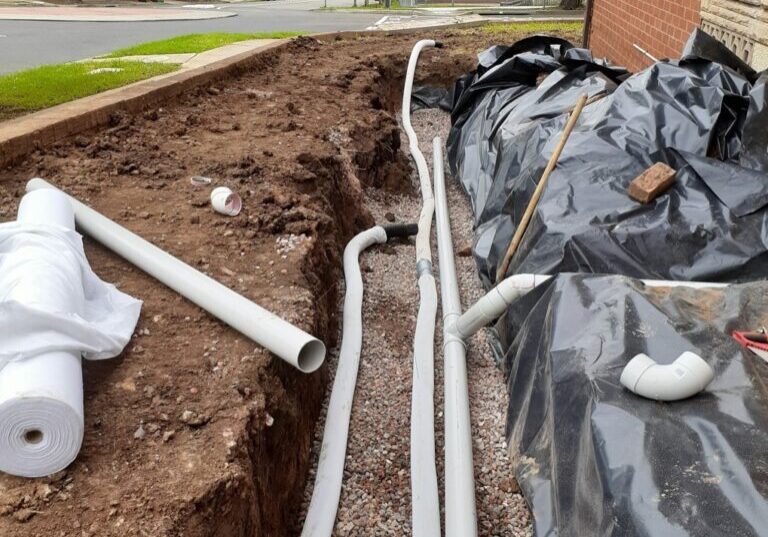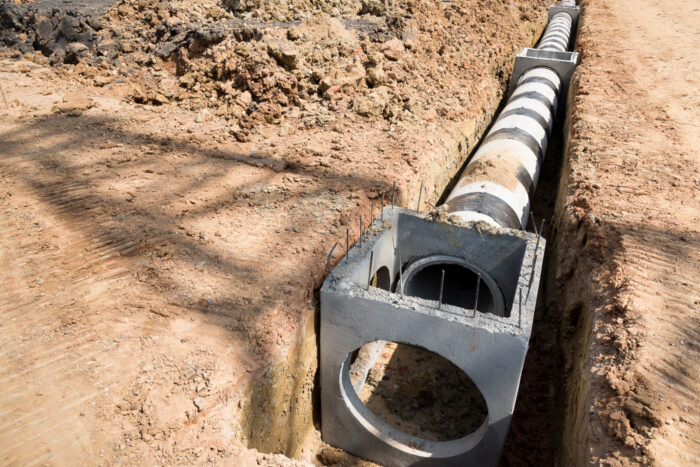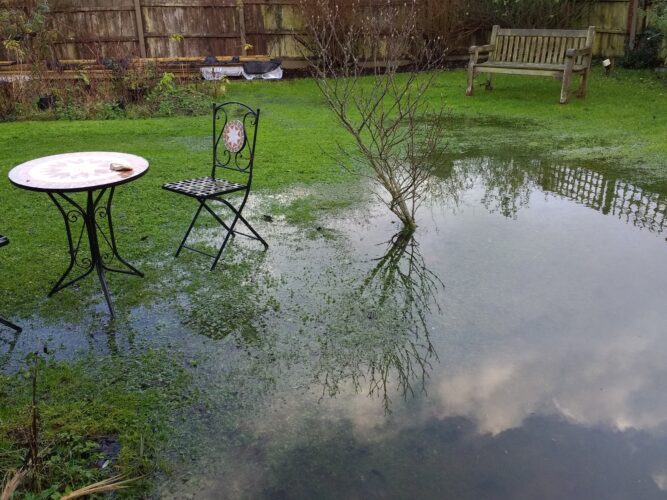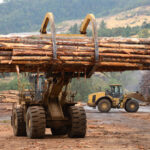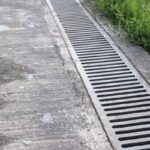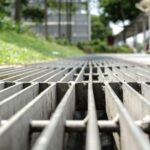Major rainfall events show how important a city’s storm drain system is to the safety of the population. Poorly managed stormwater drainage is a menace that threatens property and the environment.
In residential areas, drains help divert excess water running from buildings and hard surfaces and into the town stormwater system.
If you’re subdividing your land, you’ll need to work with an experienced stormwater drainage contractor for your development.
In Northern Virginia, landowners are responsible for managing storm drain systems on their properties, and the local government or councils are in charge of projects to manage storm and sewer drains on public land.
Why do we need drainage for stormwater?
- Reduce the risk of flooding
- Protect water quality
- Minimise the spread of contaminants and debris
- Prevent or reduce damage to properties and the environment
- Prevent stream and soil erosion
- Keep rivers, beaches and lakes safe
What are the components of a storm drain system?
Storm drain systems can be separated into site drainage and city-wide civil drain systems. They have site and civil (town) components.
Runoff flows from on-site detention systems (OSDs) and hard surfaces like roads, footpaths and car parks into the drains. These are operated by local councils and lead to larger stormwater catchments.
Eventually, they join trunk drainage and cast iron or concrete piping that carry water to different bodies.
Site Drainage
Most properties, be it a house, an office block, a farm or an industrial facility needs to be able to deal with the rainfall landing on-site.
This typically requires channelling it effectively into the local drainage so that excess water flow is discharged effectively, and does not cause flooding or runoff into neighbouring properties.
It may also require temporarily storing excess water, to prevent overloading civil drains (local creeks, the ocean and watercourses etc).
Components of site storm drain systems include:
- Gutters
- Hard surfaces
- Soft landscaping
- Rain gardens
- Underground storage tanks
- Above-ground storage basins
Civil Drainage
The purpose of civil drainage is to take runoff stormwater from around the city and slowly release it to sea, or natural water catchments.
Civil drain systems often work in with the environment, to use existing natural features like lakes, rivers and gullies to channel and discharge stormwater.
Components of civil stormwater systems include:
- Natural watercourses
- Channels
- Stormwater drains
- Catchments. These are areas that drain to stormwater structures such as underground piping and culverts.
- Stormwater quality improvement devices
- Dams
How does drainage work for stormwater from residences?
When it rains, water naturally follows the contour of the land on which it falls. At residential properties, gutters, drains and overland flow paths convey stormwater runoff to on-site detention (OSD) systems.
These involve a series of pits and tanks, both above or below the land surface, which temporarily store the runoff and controls the rate at which it’s discharged to the downstream drain.
The purpose of this water system is to reduce the chances of flooding problems occurring in the civil drain, including local lakes and creeks.
OSDs typically have two functions. The first is to collect and temporarily store excess stormwater. The second is to slowly release water into the town stormwater system.
In most on-site detention systems, the lowest point of the system is the discharge control pit, from where stormwater leaves the site. On one of the pit’s side walls is a stainless steel plate with a small hole (the orifice plate).
This controls the discharge rate.
Why is drainage for stormwater so important?
Stormwater is the runoff from rain that is ordinarily absorbed by plants and soils.
However, hard surfaces like roads, driveways and parking lots can prevent this runoff from properly soaking into the land. This excess water is bad news for us and the environment.
As it flows, it collects and transports soil, grease, oil, pesticides, litter, fertilizer, sediment and other gross pollutant traps.
These eventually spill into a lake or river that supplies our drinking water. Large volumes of water can also cause flooding, structural damage and erosion.
Who designs storm drain systems?
Good storm drain design should control storm water runoff and reduce surface water saturation during rainfall that can damage structural foundations.
Typically, councils require a storm drain plan for new buildings and any alterations or additions to existing drains on the land.
A stormwater engineer or hydraulic engineer is responsible for designing solutions to stormwater management problems.
Their plans illustrate how rainwater will be managed on a site. Included are such factors as topography, soil types and depth, soil conditions, surface obstructions and other pollutants that might affect the land.
Who builds storm drain systems?
Stormwater and rain form a significant part of outdoor plumbing needs.
Qualified stormwater drainage experts in Northern Virginia build the system in collaboration with hydraulic engineers and builders to keep structures clear of stormwater, free from flooding damage and compliant with local regulations.
When are storm drain systems designed and built?
A storm system is typically designed during the design and planning phase prior to making a development application.
It has to include stormwater connections associated with the development, details of onsite stormwater detention and details of the new infrastructure.
For a development involving the construction of additional dwellings, the system is designed after the building footprint is decided.
This is because it will determine how much rainfall roofs will catch, and therefore how much water the system needs to hold. For a subdivision that does not include the construction of dwellings, the system is designed during the engineering stage.
The building of stormwater systems occurs at the slab stage for a development involving the building of dwellings. This is because of the excavation and external drainage construction required.
For subdivisions, stormwater draining systems are usually built at the same time as other services are installed.
This is before any roads are constructed because they might need to be laid under roads and foundations. It should not be confused with sewer systems designed to get rid of sewage waste from toilets and kitchens.
Stormwater Drain Design Considerations
Storm drains must be able to handle minor and major adverse weather conditions. When designing them, several factors are taken into account. These include but are not limited to:
- The topography of the land. This includes soil type and the slope of the land. Severe slopes will increase runoff speeds. Stormwater is a gravity system, and so the site must fall toward an existing or proposed stormwater connection.
- The systems must generally conform to natural drainage patterns within a drainage basin.
- As far as possible, drains should also follow easements or reserves intended for drainage purposes.
- Surface obstructions such as buildings, electricity supply poles, and trees may affect the proposed alignment of the storm drain. If the proposed drain location cannot avoid an obstruction or has to run close by, it may be necessary to contact the owner or local council. In some cases, the obstruction can be removed. If not, the system may require a redesign. Either way, there may be additional construction costs.
- Stormwater runoff should not cause negative impacts on downstream properties or stormwater systems.
- You must minimize the number of discharge points in the system. A single large outlet is preferred over lots of smaller outlets.
- To protect the health of waterways, you must allow for a future Gross Pollution Trap (GPT) to be installed later, upstream of the pipe outlet. GPTs act like filters and trap solid waste before it can enter waterways.
- Stormwater and wastewater pipes are two separate networks and should stay that way. They should not be connected.
- Sites have to establish stormwater quality improvement devices to meet specific water quality outcomes.
How K&B Brother’s Contractors can help you
Drainage for stormwater is a highly specialized field and is different from a sewer system, although both require extensive training and experience.
K&B Brother’s Contractors is your trusted storm drain construction and maintenance services specialist in Northern Virginia with years of experience and several projects under our belt.
We help builders, owners and developers with a comprehensive range of stormwater services for residential properties and subdivisions.
To get a quote or expert advice for any stormwater projects, contact us online, or you can call us on 540-219-8985.

